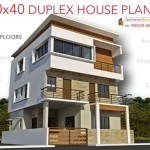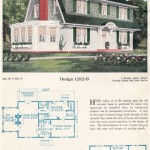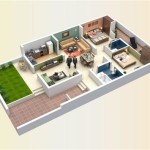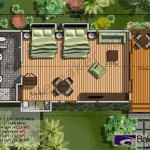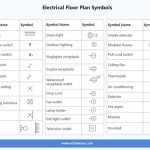Best Programs for Drawing Building Plans
The creation of accurate and detailed building plans is a fundamental aspect of the architectural and construction industries. These plans serve as the blueprint for any building project, guiding construction teams and ensuring that the final structure meets the intended design and specifications. Selecting the right software for drawing building plans is therefore crucial, as it directly impacts the efficiency, accuracy, and overall quality of the project.
Numerous software options are available, each offering a different set of features, functionalities, and levels of complexity. The "best" program ultimately depends on the specific needs of the user, considering factors such as the size and scope of the project, the required level of detail, the user's technical proficiency, and budget constraints. This article explores some of the leading programs for drawing building plans, highlighting their key features and target audiences.
AutoCAD Architecture
AutoCAD Architecture, developed by Autodesk, is a specialized version of the widely recognized AutoCAD software, tailored specifically for architectural design and drafting. Building upon the core functionality of AutoCAD, AutoCAD Architecture incorporates intelligent architectural objects, automated documentation tools, and a user-friendly interface designed to streamline the building design process.
One of the primary advantages of AutoCAD Architecture lies in its object-oriented approach. Instead of drawing individual lines and arcs, users can create intelligent building elements like walls, doors, windows, and stairs. These objects are parametric, meaning their properties can be easily modified, and any changes automatically propagate throughout the design. This parametric functionality significantly reduces errors and improves design consistency.
AutoCAD Architecture also offers extensive documentation tools, automating the creation of schedules, elevations, sections, and other essential construction documents. These tools extract information directly from the building model, ensuring that all drawings and documents are consistent and up-to-date. The software also supports industry-standard file formats, facilitating seamless collaboration with other professionals, such as structural engineers and MEP (Mechanical, Electrical, and Plumbing) consultants.
The program's extensive customization options appeal to experienced architects and designers who require a high degree of control over their drawings. However, its complexity can be a barrier to entry for users with limited CAD experience. The cost is also a significant factor, as AutoCAD Architecture is a professional-grade software with a relatively high price tag.
Revit
Revit, also developed by Autodesk, is a Building Information Modeling (BIM) software that facilitates the creation of intelligent 3D building models. Unlike traditional CAD software, which focuses on 2D drafting, Revit allows users to design in a 3D environment, building a comprehensive virtual representation of the structure. This approach offers significant advantages in terms of design visualization, clash detection, and construction coordination.
A key feature of Revit is its ability to automatically generate various views and drawings from the 3D model. Floor plans, elevations, sections, and 3D renderings are all derived from the same central model, ensuring consistency and eliminating the need for manual drafting. Any changes made to the model are automatically reflected in all associated drawings.
Revit also supports collaborative workflows, allowing multiple users to work on the same project simultaneously. This feature is particularly beneficial for large, complex projects involving multiple disciplines. The software includes tools for managing user permissions, tracking changes, and resolving conflicts, ensuring that the design process remains coordinated and efficient. Revit’s parametric modeling capabilities enable designers to quickly explore different design options and assess their impact on the overall building performance.
While Revit offers significant advantages, it also requires a significant investment in training and hardware. The software has a steep learning curve, and users need to be proficient in BIM principles to effectively utilize its capabilities. The complexity of the software also necessitates powerful computer hardware to ensure smooth performance. Similar to AutoCAD Architecture, Revit is a professional-grade software with a substantial cost associated with it.
SketchUp Pro
SketchUp Pro, developed by Trimble, is a 3D modeling software known for its ease of use and intuitive interface. While not specifically designed for architectural drafting like AutoCAD Architecture or Revit, SketchUp Pro is widely used by architects, designers, and contractors for conceptual design, 3D visualization, and basic construction documentation.
SketchUp Pro's strength lies in its accessibility. The software is relatively easy to learn, even for users with limited 3D modeling experience. Its intuitive interface and straightforward tools allow users to quickly create and manipulate 3D models of buildings and spaces. The software also has a large and active online community, providing ample resources and support for users of all skill levels.
The program includes a vast library of pre-built 3D models and components, allowing users to quickly populate their designs with furniture, fixtures, and other building elements. This feature can significantly speed up the design process, especially during the conceptual design phase. SketchUp Pro also integrates with other software applications, such as rendering engines and BIM platforms, allowing users to create high-quality visualizations and collaborate on complex projects.
While SketchUp Pro is a powerful tool for conceptual design and visualization, it lacks some of the advanced features of dedicated architectural drafting software. Its documentation tools are less sophisticated than those found in AutoCAD Architecture and Revit, and it may not be suitable for creating detailed construction drawings. However, for smaller projects or for users who prioritize ease of use and affordability, SketchUp Pro can be an excellent choice.
Chief Architect
Chief Architect is a software specifically designed for residential home design. It caters to architects, builders, designers, and homeowners who want a user-friendly platform for creating 2D and 3D home plans. The software's emphasis is on simplifying the design process and providing tools that automate many of the tasks associated with residential design.
A key feature of Chief Architect is its intelligent building tools. The software automatically creates 3D models from 2D drawings, allowing users to visualize their designs in three dimensions with minimal effort. The program also includes tools for automatically generating elevations, sections, and construction details, streamlining the documentation process.
It also offers a range of features specifically tailored for residential design, such as automatic roof generation, cabinet design tools, and landscape planning tools. These features make it easy to create detailed and realistic home designs, including both the interior and exterior of the building. Users can also customize the software to match their specific design preferences and building codes.
While Chief Architect is a good choice for residential design, it is not well-suited for larger, more complex commercial projects. Its focus on residential design means it lacks some of the advanced features and customization options found in other architectural software. However, for users who primarily work on residential projects and prioritize ease of use, Chief Architect can be a valuable tool.
Vectorworks Architect
Vectorworks Architect is a comprehensive BIM software solution that caters to architects and designers working on projects of various scales. It offers a hybrid approach combining 2D drafting and 3D modeling capabilities, promoting a seamless transition between design stages. Vectorworks Architect is known for its user-friendly interface and flexibility, allowing users to tailor the software to their specific workflows.
One of the key strengths of Vectorworks Architect is its focus on design freedom. The software provides a wide range of tools and features for exploring different design options and creating unique architectural forms. Its parametric modeling capabilities allow users to easily modify designs and experiment with different configurations. Vectorworks Architect also supports collaboration with other professionals through its compatibility with industry-standard file formats.
It also boasts robust documentation tools. The software automatically generates construction drawings, schedules, and reports from the 3D model, ensuring accuracy and consistency. It offers features for managing building information, such as material quantities, costs, and energy performance. This facilitates informed decision-making throughout the design and construction process. Vectorworks Architect is often considered a middle-ground option offering a balance between the power of Revit and the usability of SketchUp.
Vectorworks Architect's versatility comes at a price. Depending on the specific version and licensing options, it can represent a significant investment. While the interface is generally considered user-friendly, mastering all the features requires dedicated training and practice.
Considerations for Choosing the Right Software
Selecting the "best" program depends heavily on individual needs and project requirements. Several key factors should be considered during the decision-making process.
The scale and complexity of the projects being undertaken is a primary influence. Larger, more complex projects may require the advanced BIM capabilities of Revit or Vectorworks Architect. Smaller projects or conceptual design work may be better suited to SketchUp Pro or Chief Architect.
The user's level of technical proficiency plays a role. Users with limited CAD experience may find SketchUp Pro or Chief Architect easier to learn and use. Experienced CAD users may prefer the power and flexibility of AutoCAD Architecture or Revit.
Collaboration requirements should be examined. If the project involves multiple disciplines, software that supports collaborative workflows and industry-standard file formats is essential.
Budget constraints should be addressed. Architectural software ranges widely in price, and the cost of the software should be carefully considered. Free or open-source alternatives may be suitable for users with limited budgets, though they typically lack the features and support of commercial software.
Finally, considering industry standards and client expectations is important. In certain regions or for specific types of projects, certain software platforms may be preferred or required by clients or regulatory agencies.

10 Best Floor Plan Features For Home And Remodeling Projects Cedreo

Best Floor Plan Popular Designs And Plans

10 Best Floor Plan Features For Home And Remodeling Projects Cedreo

Beginners Guide To Drawing A Floor Plan With Free

Best Drafting And Program

10 Best Blueprint For Residential Design Pros Cedreo

Builder Pro Home Design Made Easy

Best Building Plan Design Visualize

10 Best Floor Plan Home Design For Mac Of 2025 Free Paid

Best Floor Plan Popular Designs And Plans

